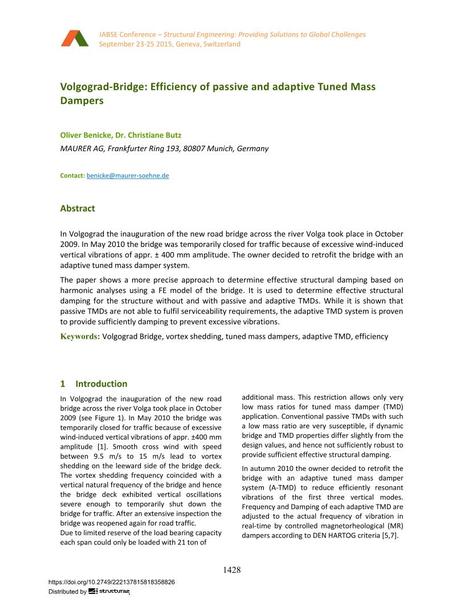Volgograd-Bridge: Efficiency of passive and adaptive Tuned Mass Dampers

|
|
|||||||||||
Détails bibliographiques
| Auteur(s): |
Oliver Benicke
(MAURER AG, Frankfurter Ring 193, 80807 Munich, Germany)
Christiane Butz (MAURER AG, Frankfurter Ring 193, 80807 Munich, Germany) |
||||
|---|---|---|---|---|---|
| Médium: | papier de conférence | ||||
| Langue(s): | anglais | ||||
| Conférence: | IABSE Conference: Structural Engineering: Providing Solutions to Global Challenges, Geneva, Switzerland, September 2015 | ||||
| Publié dans: | IABSE Conference Geneva 2015 | ||||
|
|||||
| Page(s): | 1428-1435 | ||||
| Nombre total de pages (du PDF): | 8 | ||||
| Année: | 2015 | ||||
| DOI: | 10.2749/222137815818358826 | ||||
| Abstrait: |
In Volgograd the inauguration of the new road bridge across the river Volga took place in October 2009. In May 2010 the bridge was temporarily closed for traffic because of excessive wind-induced vertical vibrations of appr. ± 400 mm amplitude. The owner decided to retrofit the bridge with an adaptive tuned mass damper system. The paper shows a more precise approach to determine effective structural damping based on harmonic analyses using a FE model of the bridge. It is used to determine effective structural damping for the structure without and with passive and adaptive TMDs. While it is shown that passive TMDs are not able to fulfil serviceability requirements, the adaptive TMD system is proven to provide sufficiently damping to prevent excessive vibrations. |
||||
